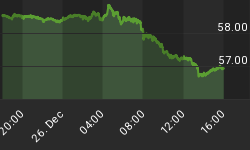The following is an excerpt from commentary that originally appeared at Treasure Chests for the benefit of subscribers on Monday, April 3, 2017.
Margin debt hits fresh new highs, but according to status quo puppets, nothing to worry about because its different this time. (i.e. just like 1929 - in the words of Irving Fisher, "a permanently high plateau" [of prosperity].) And in a sense such talk is correct, because the markets have never been more rigged, however even with this, the bureaucracy's price managers will fail at some point (stocks usually peak a few months after a margin debt peak), as all faulty and unfair systems self-destruct from within eventually. In the case of the stock market, as with all other previous episodes since 1987, it's speculator exhaustion that develops, where while the present sequence is pushing the extremes, it too will end.
That said, the extreme could always get 'more extreme'. According to Martin Armstrong (his computer?) the Dow could go to 42,000. In looking at the monthly CBOE Volatility Index (VIX) below, I'm afraid I can't agree with Marty this time, at least not with his cavalier call for a doubling of the Dow from here. Yes, if speculator betting practices don't change as we head into summer, maybe the Dow could grind up to 22,000 based on the numerics previously discussed on these pages; however, the possibility of a doubling from here appears unlikely. Indeed, as you would know in reading these pages these past month, a move to 22,000 (2450 on the S&P 500 [SPX]), is best-case scenario as far as we can project. Anything past these metrics cannot be long for this earth.
How could such a move happen? What is his computer suggesting? It's suggesting the European Union (EU) will break up this year, and money will flow from the Eurozone to the US in a 'safe haven bid' because the 'big money' can't buy gold (or bonds apparently). They can't buy gold because the market is too small, so the geniuses who manage money will be forced to buy stocks. That's a nice story, and knowing people, he will likely be right to an extent. However in circling back up to the margin debt situation, some people might consider paying off their debt in a time of increasing uncertainty - and this is the key (and key fault of Marty's argument) - especially if stocks are falling.
You see, Marty's argument is premised on the basis increasing volumes coming from Europe in a 'break-up panic' will flow into US stocks. And again, this might be correct, especially if the derivatives speculators still have key index / ETF open interest put / call ratios elevated. Thing is, if they are not, stocks will not rise, no matter the volumes, foreign flows - whatever. The last five years have proved volumes don't matter on a sustained basis, only speculator betting practices. And maybe it takes something like stocks rising into an EU break-up to finally burn the derivatives gamblers bad enough to get them to finally stop - but that factor in and of itself, would not propel US stocks (and only US stocks? - can this happen with all other stock market's falling?) in and of itself. The markets are controlled by the derivatives, where change will not come until the speculators start betting accordingly. It's all an illusion. (i.e. so keep an eye on the open interest put / call ratio for VXX for signals.)
That's when the VIX will breakout, and no coincidence when sentiment is 'right'. A breakout appears scheduled to occur in coming months after this period of unprecedented calm. As you can see in the monthly plot below, the trade is pushing ever-further into the apex of an extreme wedge, which should complete as we approach summer / fall. And even though the breakout could be constrained by a larger trading range / structure (the larger wedge denoted), still, important signals are being generated here that will eventually lead to a much larger breakout. Like the '29 and '87 patterns, it appears stocks could remain buoyant longer than many educated observers believe right now. However, once the VIX breaks out of the extreme (tight) wedge annotated in the above, deference should be attributed to the bearish case at that time. Of course if the stochastic in the chart above turns buoyant sooner rather than later, which is my thinking, then this observation might become important. (See Figure 1)
Figure 1
To his credit, Marty does characterize why gold will finally rise for the right reason, which is loss of faith in government, the system, the status quo. That's right, but the move will most likely not start until the funds that are long COMEX silver right now are purged from their positions, much to the consternation of Ted Butler. The last time we had this situation, Ted was out at that time as well, calling for a magical commercial short squeeze in COMEX silver. This of course did not happen then (because the commercial traders have bottomless pockets when push comes to shove, and even if that's not true, they have more money than the funds) and it will not happen this time as well.
That's all for today folks. If you want to see the more charts, observations, and conclusions that go along with them from this commentary, please visit our site at treasurechests.info and subscribe.
You will not regret it.
















